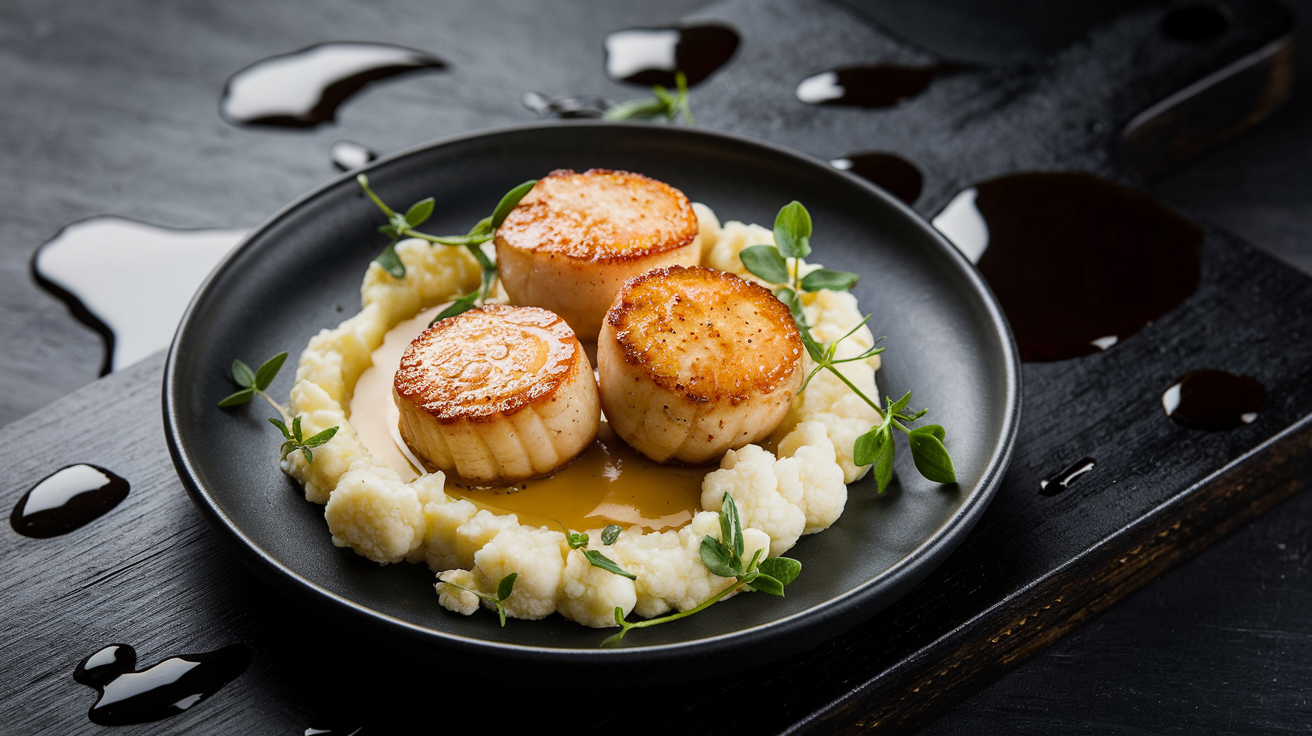Key points
• Lighting: Good lighting is key in food photography. It brings out the dish’s colors and textures and adds depth. Natural light is usually the best choice because it’s soft and shows true colors.
• Composition: How you arrange things matters a lot. Use the rule of thirds, lines that lead the eye, and framing to grab attention and keep people interested.
• Styling: Making food look its best for the camera is an art. It means picking the perfect dishes and utensils, placing the food just right, and adding small details to improve how everything looks.
Contents
- Key points
- Capturing the Flavors Digitally
- The Artistry Behind the Camera
- Post-Production Savvy
- Garnishing with Props and Setting
- Camera Selection: DSLR vs Mirrorless
- Lens Choices for Food Photography
- Tripods and Stabilization Tools
- Lighting Equipment for Food Detail
- Composition Techniques for Food
- Color Theory in Food Photography
- Texture and Layering in Food Presentation
- Props and Tableware Selection
- Natural Light vs. Artificial Light
- Lighting Angles and Food Photography
- Reflectors, Diffusers, and Light Modifiers
- Camera Settings for Sharp Food Images
- Depth of Field and Focusing on Food
- Capturing Movement in Food Photography
- The Role of Backdrops in Food Images
- Basic Editing Techniques for Food Photos
- Color Correction for Appetizing Results
- Retouching Food and Removing Distractions
- Selecting Images for a Food Photography Portfolio
- Online Presentation of Food Photography
- Marketing Strategies for Food Photographers
- Authenticity vs. Enhancement in Food Images
- Legal Aspects of Food Photography
Capturing the Flavors Digitally
A digital camera is a photo taker’s treasure. Modern ones let photographers adjust settings to nail the picture. They tweak things like aperture, shutter speed, and ISO so every little part of the dish stands out.
The Artistry Behind the Camera
But taking photos isn’t everything. It’s also about how you do it. Food photography tells a story. Pros think about angles and how to put things together. They use focus tricks to make sure the food stands out against a soft, blurry background. This makes the dish the main event.
Post-Production Savvy
Once the photo shoot’s over, editing starts. That’s where software comes in and helps make your photos even better. It’s time to adjust exposure, fix colors, or crop things nicely to give your work that extra professional touch.
Garnishing with Props and Setting
Dishes aren’t the only stars—things like plates, forks, and glasses are big too. And don’t forget backgrounds like wood or cloth that set the mood. You have to pick props carefully, so they help rather than steal the spotlight from your food.
Food photography combines tech skills with creative ideas. It takes old-school storytelling and mixes it with modern gear to make pictures that look good enough to eat—and that can tell their own stories. But getting it perfect takes practice and heart. Plus, presentation is huge in cooking and photo-taking too. Putting food together for a picture isn’t just about looking nice; it needs creativity, care, and an eye for tiny details. How things sit on your plate, the colors and textures you choose, and how they all play together can really change how great your final picture looks.
A well-styled plate can show off freshness, make people think the food is top-notch, and get an emotional reaction that pulls them into what they’re seeing. This isn’t just for ads or magazines that want to sell stuff—it’s for social media where amazing pics get noticed. Food stylists have special tricks up their sleeves for getting that killer shot—they might use tweezers to put things just right or make steam for a hot-off-the-stove look.
But it’s important not to go too far. Keep a balance between fancy presentation and keeping things real so people believe what they’re seeing is what they’d actually get. Overdone styling can look fake which nobody wants in their food pictures.
Right now, people are into pictures that seem more down-to-earth—showing food in its natural wonky shapes, using sunlight, and embracing little flaws that tell a bit of a story. Folks often want to feel connected to real experiences; seeing food in its honest state can be more inviting.
You can’t ignore how much styling can affect whether people love your pictures or pass them by. If you’re taking photos for ads, cookbooks, or Instagram, doing styling right can draw people in instead of turning them away. Just be careful about mistakes like props that don’t match or themes that distract from your main point: the dish itself.
In short, styling is super important for making your food photos come alive. With so many people posting food stuff online, getting better at styling can help you stand out. It lets you turn a simple meal into a story which can make folks pay attention and gives a richer look at our eating adventures.
Camera Selection: DSLR vs Mirrorless
Picking the best camera is critical for showing off food’s rich look and bright colors. DSLRs have been popular with pros because of their quality and options. But mirrorless cameras are catching up quick, offering good results in a tinier package. Each type has its ups and downs: DSLRs have tons of lenses available and are made tough while mirrorless cameras are light and fast.
Lens Choices for Food Photography
Lenses are your camera’s eyes—choosing the right one is key for food shots. A macro lens is great for close-ups to get all those delicious details. A common 50mm lens also does a good job as it sees things like we do which gives your pictures a natural feel. Or you could try a tilt-shift lens which adds some artistic blur to spice things up.
Tripods and Stabilization Tools
Blurry pictures are a no-go in food photography—so tripods and stabilizers are important tools. Tripods hold your camera steady so you can focus on getting your framing perfect. They’re a must when dealing with dim lighting or when you need exactness in your shots. Meanwhile, handheld rigs are handy when you want to take pictures from wild angles without losing focus.
Lighting Equipment for Food Detail
The right kind of light changes everything in photography. For food pictures, soft light rules because it shows off the little bits and textures without making shadows that are too harsh. Continuous lights let you see the effect straight away while flash units give you power and control over how much light hits your scene. Use reflectors, diffusers, or light tents—they can help spread light evenly so every piece of your dish shines.
Styling food is like prepping a stage where what you’re eating gets all the attention. Setting up ingredients attractively matters tons—it’s about making them look fresh and tasty while keeping their color bright during the whole shoot.
Composition Techniques for Food
To arrange things on a plate just right, you’ve got to know some composition basics. Apply the ‘Rule of Thirds’ by thinking of a tic-tac-toe board on your frame to make things visually interesting. Leading lines help pull the eye towards your main feature—the food—and leaving space around things stops crowding so each piece can pop on its own.
Color Theory in Food Photography
Colors affect how we feel—especially when it comes to food. Some colors like reds can make us hungry. Choosing colors that complement each other makes your dish stand out whereas similar hues give a sense of calmness in your photo. Knowing how colors interact helps create impactful pictures that really tempt viewers.
Texture and Layering in Food Presentation
In pictures, textures give context and depth that makes dishes inviting and realistic-looking. Mixing textures like crusty bread with smooth soup adds contrast—just like in actual meals—and stacking different layers gives images 3D effects that all but ask you to dig in with your fork (or spoon).
Props and Tableware Selection
Picking props and plates isn’t only practical—it tells part of your story too. They set up scenes that hint at lifestyles or folks’ heritage which helps spill the beans on what’s behind your delicious pictures. Find pieces that fit without upstaging the best thing there: the grub! Old-timey cutlery, raw wood boards or clean minimalistic crockeries help build up your shot’s whole vibe making it super appealing.
Natural Light vs. Artificial Light
In the world of high-quality food photography, it’s essential to know the difference between natural and artificial light. Sunlight provides a gentle and cozy glow, making food look welcoming and realistic. Meanwhile, artificial light, such as strobes or LED lights, lets photographers adjust how light hits the subject. This can bring out the colors and details. However, using artificial light can be tricky – it might create tough shadows or give the food a fake look if not done right.
Lighting Angles and Food Photography
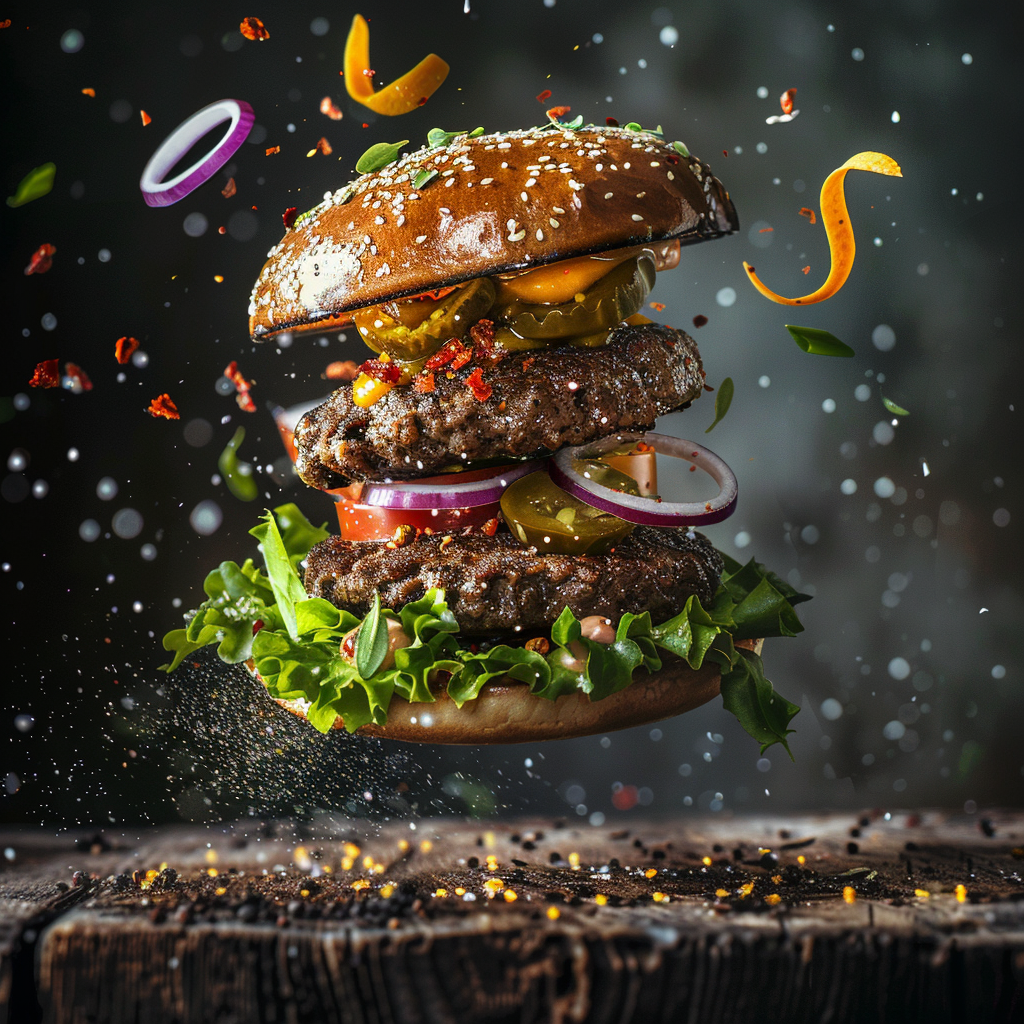
The position of lights around food can really change its appearance. Some foods look amazing when the light comes from behind, giving them a beautiful glow and making things like steam or see-through liquids like drinks and sauces stand out. When you light food from the side, it’s easier to see textures and layers because soft shadows add depth to your photo. If you shine light from above, it’s perfect for taking pictures of flat dishes or to create a bold, artsy effect. Trying different lighting angles is key to making a dish look utterly delicious.
Reflectors, Diffusers, and Light Modifiers

If you want to get the lighting just right, you’ll need tools like reflectors, diffusers, and various light modifiers. Reflectors are handy when you need to bounce light back onto your dish, getting rid of shadows and evening out the light in your photos. On the other hand, diffusers can soften the light. This makes everything look more natural by spreading the light gently over the scene. They’re great at toning down harsh sunlight or strong artificial lights. You’ve also got things like snoots, grids, and barn doors. These gadgets let you point the light exactly where it’s needed most, so photographers can really let their creativity loose.
To be a pro at taking pictures of food, you need a mix of artistic touch and technical skills. The light is key—it should be natural if possible because it highlights the dish’s texture and colors best. But watch out for tough shadows that can make the food look less inviting. How you angle your shot is critical too; looking down from above is perfect for making a plate look good, while snapping from the side can show off a meal’s height and layers. Whether you go for a close-up or a shot from further away, think about which details you want to stand out.
Camera Settings for Sharp Food Images
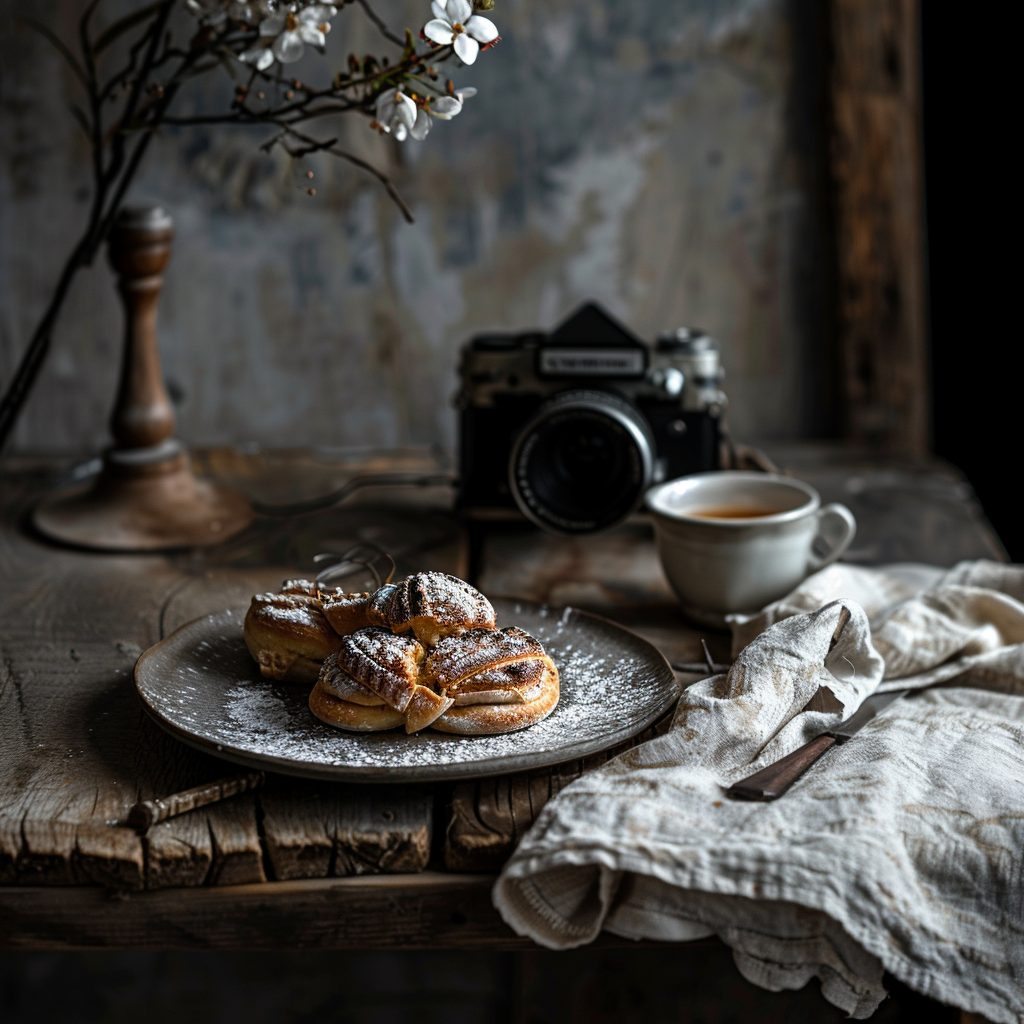
If you want your food pictures to be super sharp, setting your camera correctly is key. Stick to a low ISO to avoid noisy, grainy photos. Try using apertures between f/2.8 and f/4 for that nice effect where your food is in focus but the background is blurred out. But, if you want everything in the shot crisp and clear, go for a smaller aperture like f/8 instead. A tripod’s really handy for keeping your camera still, which is great for longer exposures and getting rid of any shake.
Depth of Field and Focusing on Food
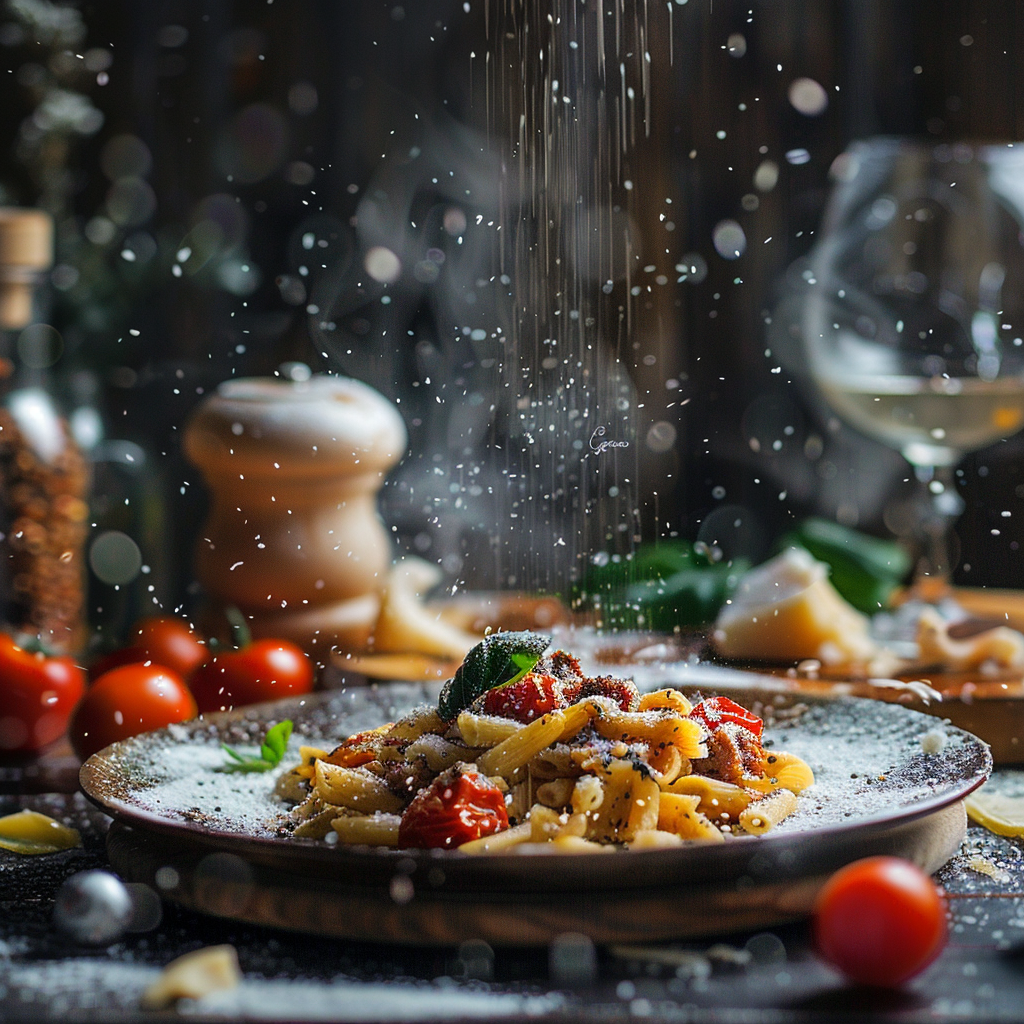
In food photography, depth of field decides what part of your picture will be sharp. A narrow depth of field makes certain parts of your meal stand out, like a beacon for viewers’ eyes. If you want to pinpoint the focus right where you want it, like on the shiny top of a cake or the crusty outside of just-baked bread, go with manual focus to get it spot-on.
Capturing Movement in Food Photography
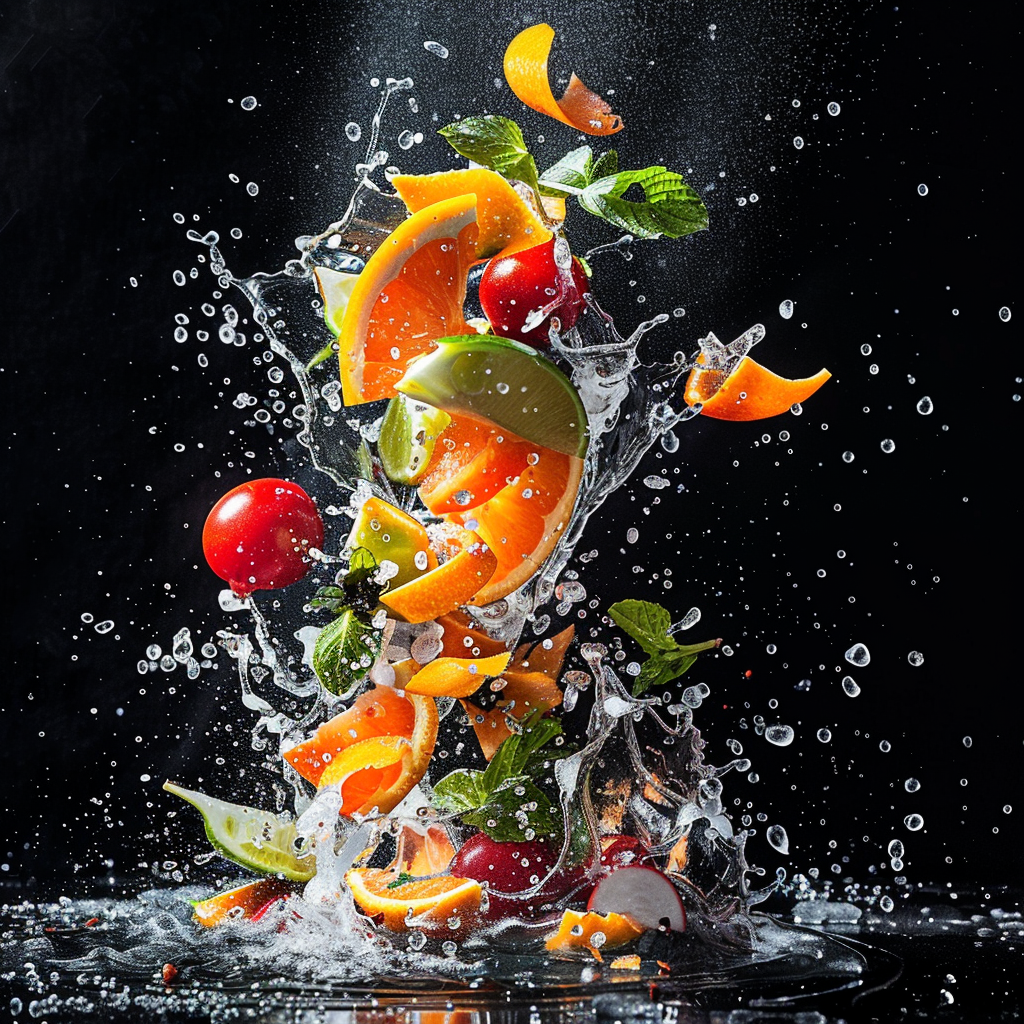
Adding a little action can make your food photos more lively. You could snap a shot of steam floating up from something hot or salad dressing pouring at the perfect time. Quick shutter speeds are important for freezing motion and making your pictures pop with energy. Getting movement right is all about timing, so keep at it and be patient. Experiment with various speeds to get just the right effect.
The Role of Backdrops in Food Images
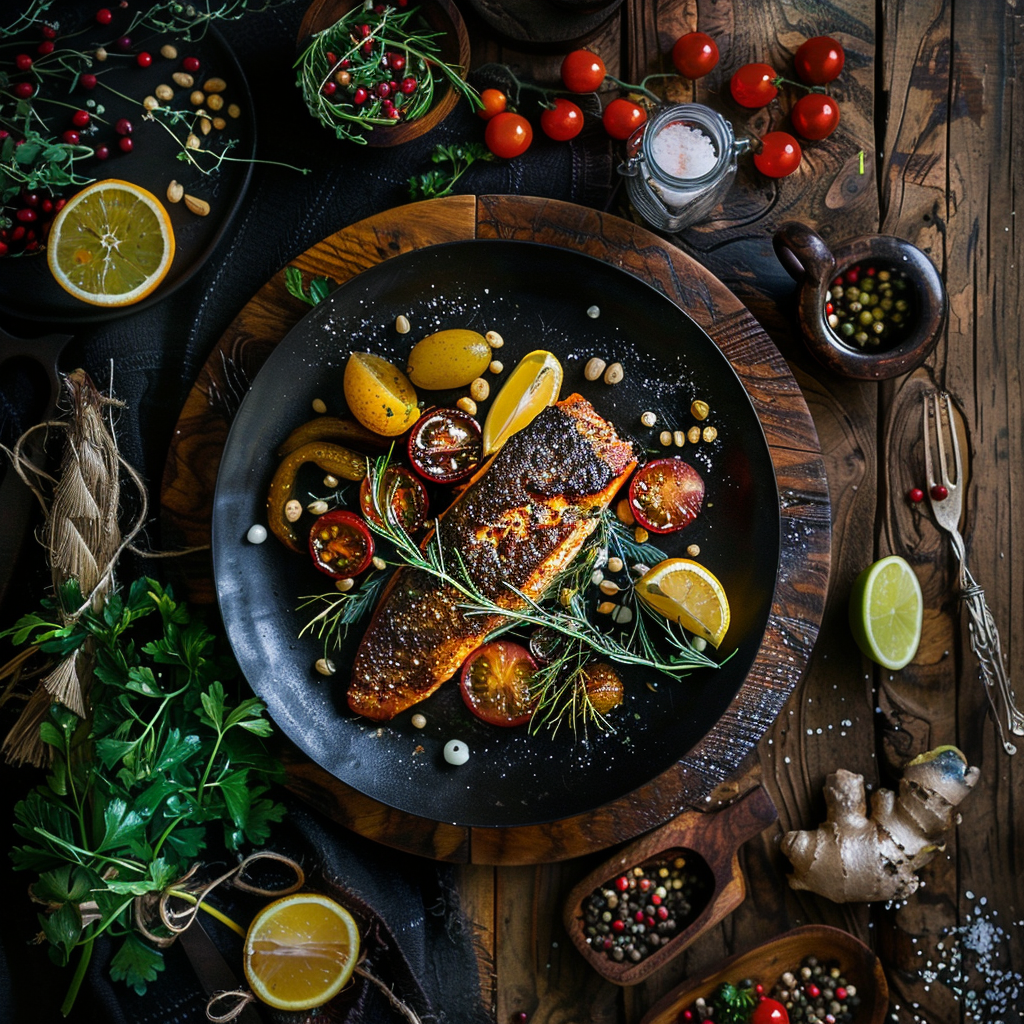
Don’t just throw in any backdrop for your food photos; pick one that really makes your dish stand out without stealing the show. Think about the textures and colors you’re using—maybe a weathered wood for a homey pie or a sleek white surface for a modern gourmet dish. Your backdrop’s like a theatre set for your food, so make it count.
Cutting edge food pics also depend on some behind-the-scenes wizardry called post-processing. This is where you turn decent snaps into wow-worthy images. Start simple: tweak the brightness, contrast, and crispness to make everything look just right. And don’t shy away from cropping to jazz up the composition or even flipping the pic around to best match the dish’s look.
Basic Editing Techniques for Food Photos
First step in sprucing up a photo is playing with brightness and contrast. Get those levels right, and you’ll bring out all the lush details and textures of whatever’s on the plate. But keep an eye out; too much or too little can ruin the shot. Bumping up color saturation can also make your dishes pop, but don’t overdo it—you want that food to look yummy, not fake.
Color Correction for Appetizing Results
A little color tweaking can mean the difference between blah and tantalizing food photos. Balance out those color temps to rid your daylight shots of weird blueish hues. This tends to warm things up and invites people in. And don’t forget about individual colors. Amping up greens and reds can turn your herbs vibrant and those tomatoes into eye-catchers.
Retouching Food and Removing Distractions
When you’re retouching, it’s all about nixing imperfections—like a blemished fruit or an out-of-place spot on the plate. Then, you’ve gotta sweep away anything that draws attention away from your scrumptious dish, like crumbs or smudges. A tidy image means nothing’s getting between the viewer and your picture-perfect food.
If you’re serious about food photography, you’ll need a killer portfolio. It’s like your business card but with pictures. It shows off what you can do. Mix it up in there with different styles, colors, and compositions to keep things interesting for anyone looking.
Selecting Images for a Food Photography Portfolio
Choosing shots for your portfolio isn’t something to rush. Look for variety to display your range—from close-ups of steamy pasta to that perfect caprese salad angle. But remember, a handful of awesome pics will beat a whole bunch of so-so ones any day.
Online Presentation of Food Photography
In today’s world, if you’re not online, you’re nowhere. Make sure your digital portfolio is simple to navigate, looks great and loads quick! Whether it’s your website or an artsy platform, those high-res photos got to shine. And toss in some searchable keywords so clients can stumble upon your talents quicker.
Marketing Strategies for Food Photographers
You’ve got to hustle if you want your food photos to be seen. Share regularly on social media and chat with your followers. Networking’s also huge—make friends with chefs and restaurant folks who might need pics. Join forces with other creatives too; it’ll help spread your name further.
Being ethical in food photography is super important for keeping everyone’s trust up. There’s a fine line between showing the food as it truly is and giving it a bit of zing to catch eyes. Just make sure what you’re enhancing still feels real.
Authenticity vs. Enhancement in Food Images
Finding the sweet spot between staying true to the dish and making it look its best can be tricky. Authenticity means your viewers know what they’re in for—no fake-outs allowed. But if you bump up the appeal too much, the food won’t live up to expectations when it’s finally tasted.
Legal Aspects of Food Photography
Don’t forget there are rules when snapping shots of food, especially if brands are involved. Always get permits before splashing logos across your photos. A misstep here could land you in hot water legally speaking, if it looks like an official endorsement that’s not really there. Stick to the legal lane for a smooth ride.
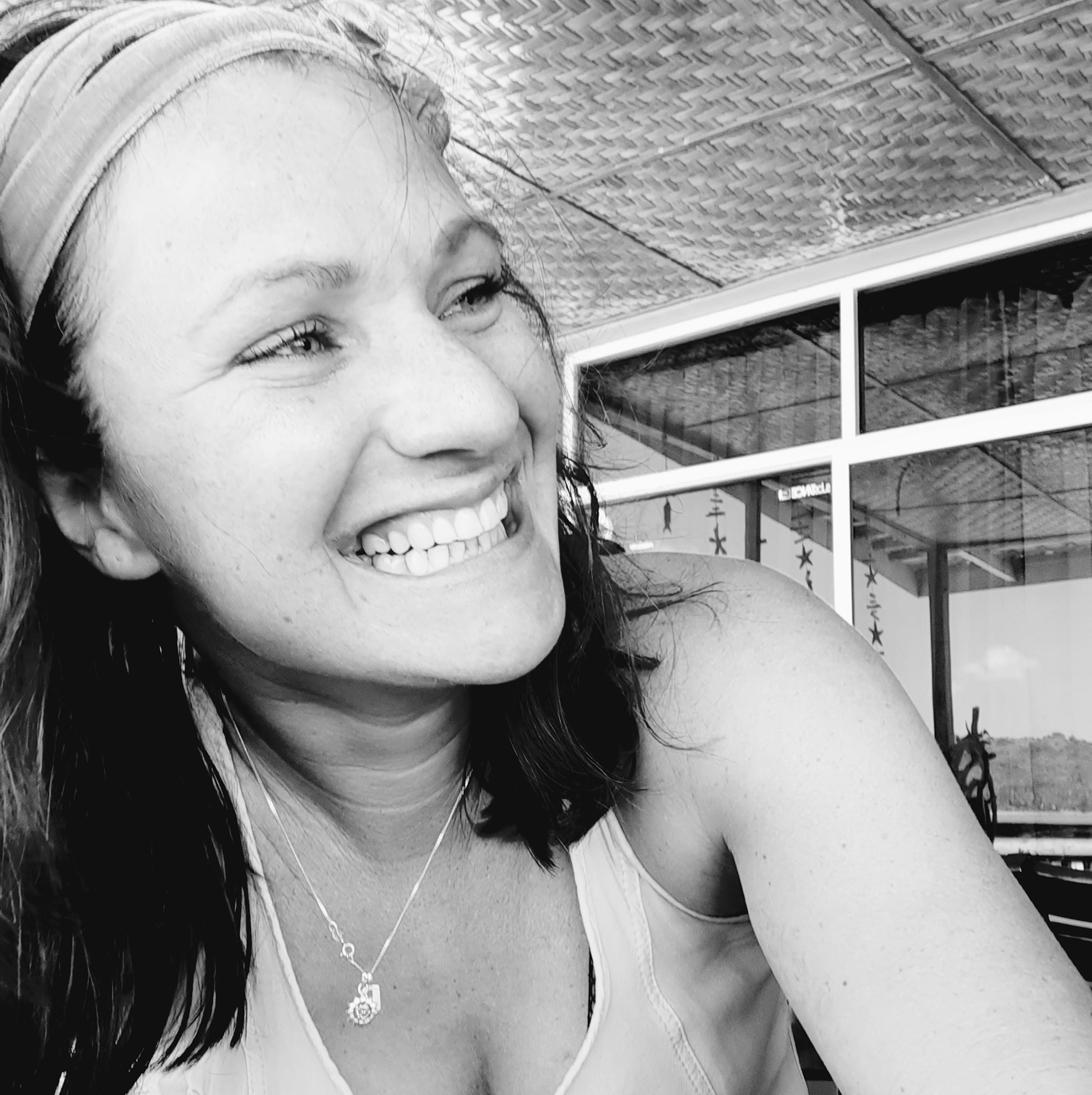
About Author
Rachel Noël is a professional photographer and videographer from the UK with over 10+ years of experience. Rachel specializes in Underwater, Tavel & Portrait photography among other areas.
